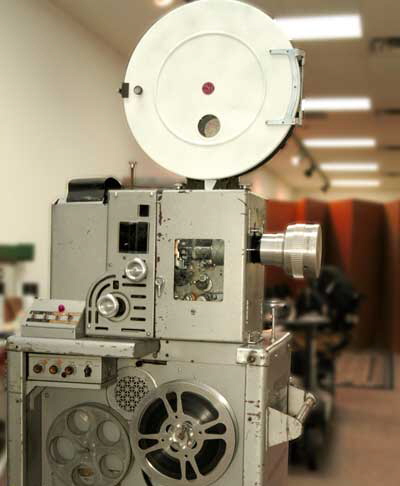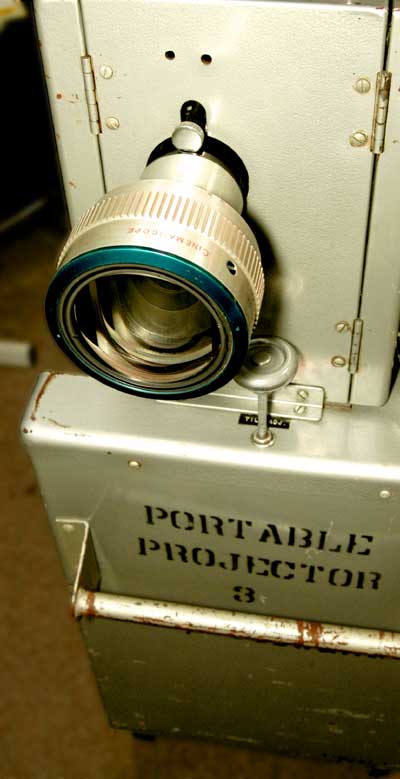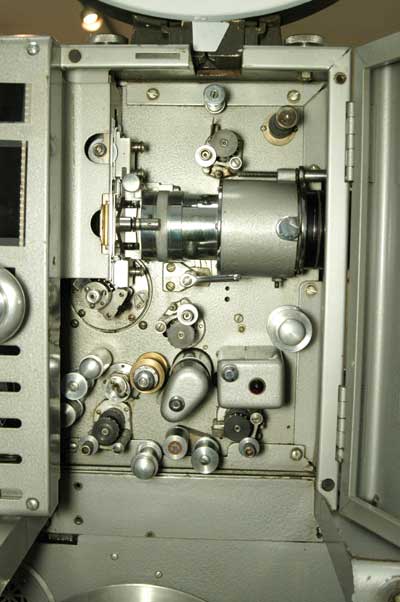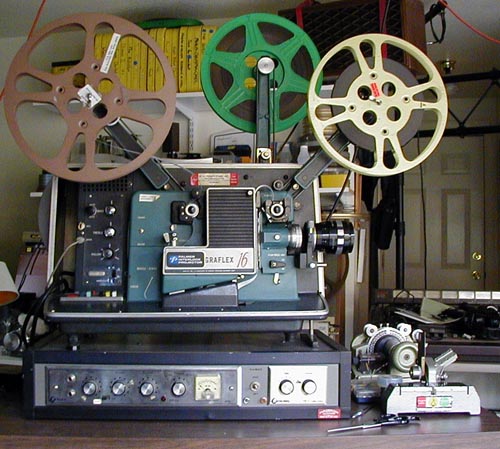Cinema Theater
Projectors
DeVry 35mm XD2000 dual system mechanical interlock
 This projector's head (the main work part) was used in many theaters all over the united states for theatrical presentation. But this particular projector was specially modified by the Kodak company to be portable so directors and cinematographers use it to view daily prints while on location shoots.
This projector's head (the main work part) was used in many theaters all over the united states for theatrical presentation. But this particular projector was specially modified by the Kodak company to be portable so directors and cinematographers use it to view daily prints while on location shoots.
To facilitate this it also has a mechanical interlocked audio mag track playback system. This means that the sound that was recorded on set could be syncronized and played back with the daily prints.
The projector is rough cosmetically but runs well. It has a 1000W tungsten lamp house so it can be plugged inot most any common outlet. It features a xenon filter for color gauging depending on what color balance the film is processed to.
The projector is pictured in these three photos with a somewhat unique Bell and Howell Cinemascope projection lens.

Graflex / Palmer 16mm dual system mechanical interlock
This is a Graflex 16mm projector that has been converted by the Palmer Company in California, into a sound track interlock projector. The sound track is a 16mm fullcoat magnetic perforated film, and runs at the same speed as the optical film, 24 sprocket holes per second. This projector is curently being used in the tradtional way but also as a controller for a multi channel digital sound system. This is achieved by striping a SMPTE signal to the fullcoat that is paired with an edited print. The SMPTE signal is fed to a time code converter. The signal is converted to MTC (midi time code) and is used to synchronize a computer sequencer, like Vegas or Cooledit pro, to the film. The result is a high fidelity (24bit 96khz) multi-channel (up to eight channels) sync sound playback with an original 16mm edited print of the the film.
Telex 16mm 5 blade shutter video chain
(coming later)
Bell and Howell 16mm Theatrical presentation
(coming later)
The Theater
Not all rooms are created equal. And many if not most rooms will work for a theater for an audience of any size. There is a common misconception that a large screen and big sound system will recreate a "theater" experience. But the quality of the theater experience more to do with the shape, symetry, scale, and materials of the architecture than the size of the screen or the sound system.
Projector accessories
(coming later)
Lenses
(coming later)
Anamorphic lenses
A special lenses that fit onto typical projector lenses that stretch the image horizontally. Most 35mm anamorphic prints require a 2X anamorphic projector lens to stretch the squeezed image on the print into a projected image twice as wide as the normal projected image.
Sound systems
(coming later)
Projection Screens
(coming later)
Projection Booth
(coming later)

 This projector's head (the main work part) was used in many theaters all over the united states for theatrical presentation. But this particular projector was specially modified by the Kodak company to be portable so directors and cinematographers use it to view daily prints while on location shoots.
This projector's head (the main work part) was used in many theaters all over the united states for theatrical presentation. But this particular projector was specially modified by the Kodak company to be portable so directors and cinematographers use it to view daily prints while on location shoots.

